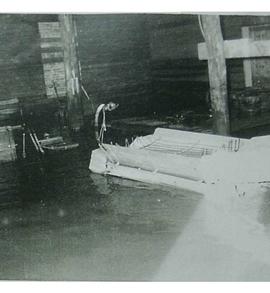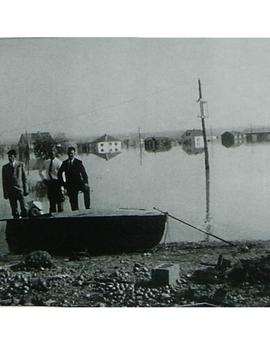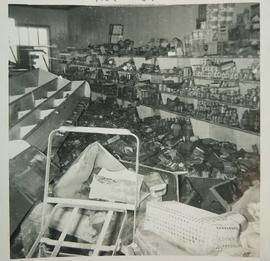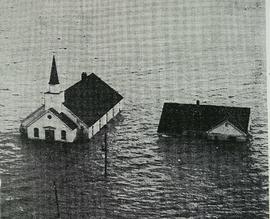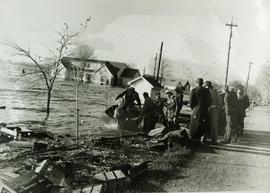- CA BWGPL LHC-Dis-Hazel-PH26667
- Item
- 1996-10
Part of Local History Collection
Description : "Reginald Kuzyk was 30 years old, and an employee of the department of Highways, back on October 15th, 1954, when Hurricane Hazel hit.
The storm brought torrential rains and flooding. Dams burst, and homes were swept away in the floods. A total of 81 people lost their lives in Ontario. The floodwaters had washed onions from Holland Marsh fields and heaped them on the highway in "gobs.... I never seen so many onions in one place. They were all over the ground, and everywhere." He also remembers seeing two homes, which had drifted on the floodwaters until they washed up next to the highway. By the time Hazel blew itself out, more than seven thousand acres of farmland on both sides of the 400 were under water, covered by a lake more than 7' deep in places.
George Sadovchuk's described the Marsh after Hurricane Hazel as "it was just a lake. It was very impressive to see all that water where once was viable land... I was just amazed at the destruction that took place."
Relief efforts brought the homeless into Bradford, to the Town Hall, where they were clothed and fed by volunteers. A total of 25 pumps took about 4 weeks to drain the fields, at a peak pumping 220,000 gallons per minute. But it would take months to clear the debris and repair the damage. Seventy families - 350 men, women and children - spent the winter that followed in a trailer park, set up by the Rotary Club on the site of the Bradford Arena.
The sky was appropriately grey, for Sunday's historic tour of the Holland Marsh. The tour not only commemorated the 200th Anniversary of Yonge Street, but also the 42nd anniversary of Hurricane Hazel."
Bradford West Gwillimbury Public Library


